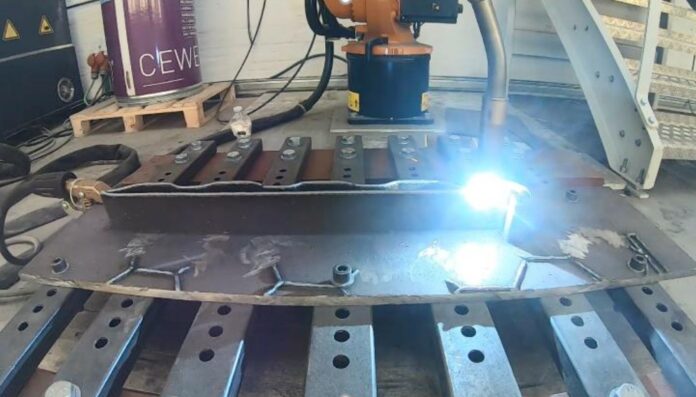As part of the international “Ad-Proc-Add” of the ecoplus Mechatronics Cluster, Belgian researchers have investigated the influence of various processes within the additive-subtractive manufacturing process chain (ASM) on the quality of the end product and developed empirical models for predicting bead geometry for the conventional Gas Metal Arc Welding process and the Cold Metal Transfer process.
Wire and Arc Additive Manufacturing (WAAM) is an additive manufacturing technique that uses an electric arc as a fusion source to melt filler wire and build a component layer by layer. WAAM enables efficient production of medium to large metal parts, but after deposition, it exhibits low dimensional accuracy and surface quality, which is why further subtractive post-processing is usually required.
As part of the international “Ad-Proc-Add” project, a Belgian team from KU Leuven, Thomas More University, the Belgian Welding Institute npo, and Sirris investigated the influence of various processes within the additive-subtractive manufacturing process chain (ASM) on the quality of the final product. Empirical models for predicting bead geometry were created for both the conventional Gas Metal Arc Welding (GMAW) process and the Cold Metal Transfer (CMT) process.
Eliminate material defects and improve surface quality
A key aspect of the project was determining the material to be provided for machining in order to achieve the required dimensional and shape accuracy of the part. It was found that the WAAM process parameters have a significant influence on the effective wall width, the surface quality after deposition, and the minimum amount of material that needs to be removed during the post-processing step.
Another important finding related to the positioning, orientation, and optimal cutting parameters of the parts for post-processing. Experiments showed that the WAAM process parameters, especially speed, wire feed, and interpass temperature, have a significant influence on the characteristics of the deposited surface and the overall wall width that influence the milling process.
Significant progress was made through the development of multi-sensor platforms, which were used separately for the AM and post-processing steps, to investigate the influence of different processes on the properties of the final part. By monitoring current, voltage, gas flow rate, and temperature, the stability of the WAAM process could be evaluated, thereby eliminating various material defects and improving surface performance.
The insights gained were applied to various industrial case study parts. Research on GMAW-based WAAM and the ASM process chain is now part of several educational courses at KU Leuven and Thomas More. These advances demonstrate the enormous potential of WAAM technology and how it can be used to improve efficiency and quality in additive manufacturing.
Remember, you can post job opportunities in the AM Industry on 3D ADEPT Media free of charge or look for a job via our job board. Make sure to follow us on our social networks and subscribe to our weekly newsletter : Facebook, Twitter, LinkedIn & Instagram ! If you want to be featured in the next issue of our digital magazine or if you hear a story that needs to be heard, make sure to send it to contact@3dadept.com


